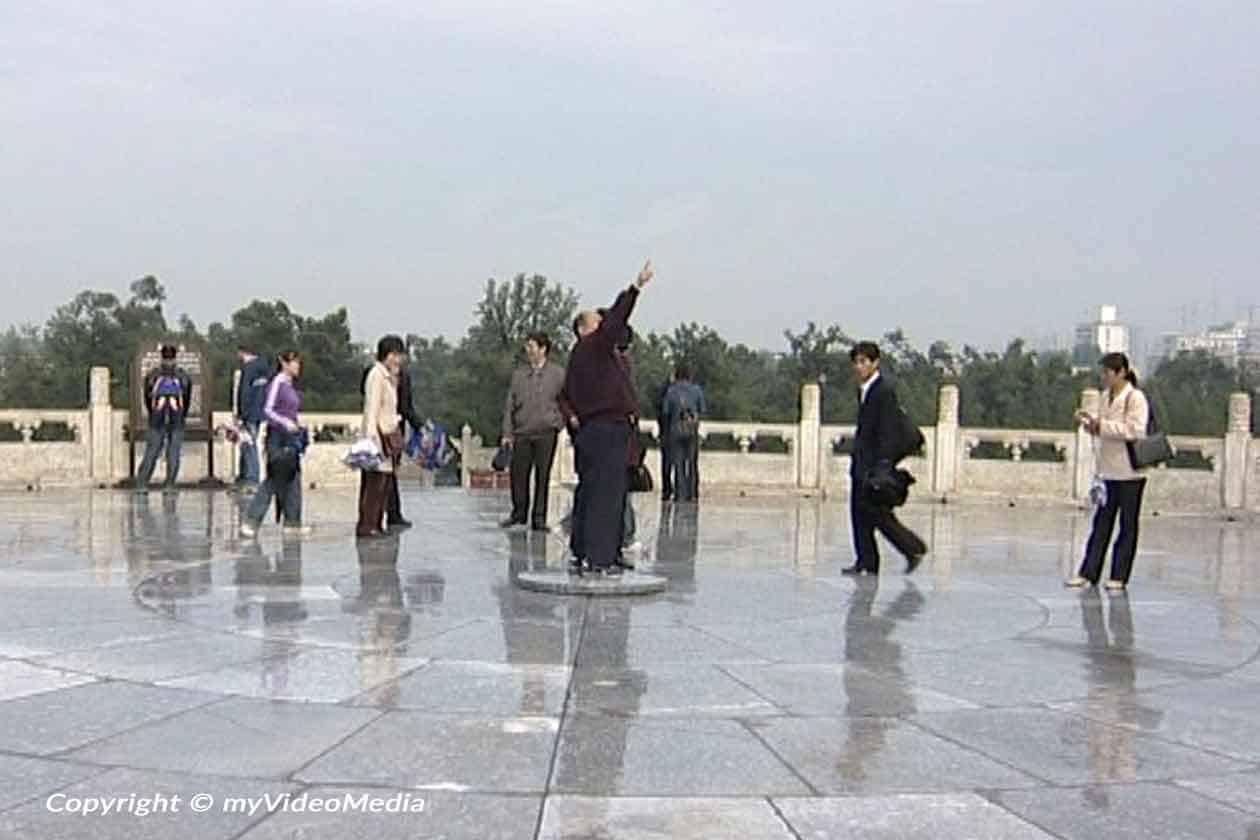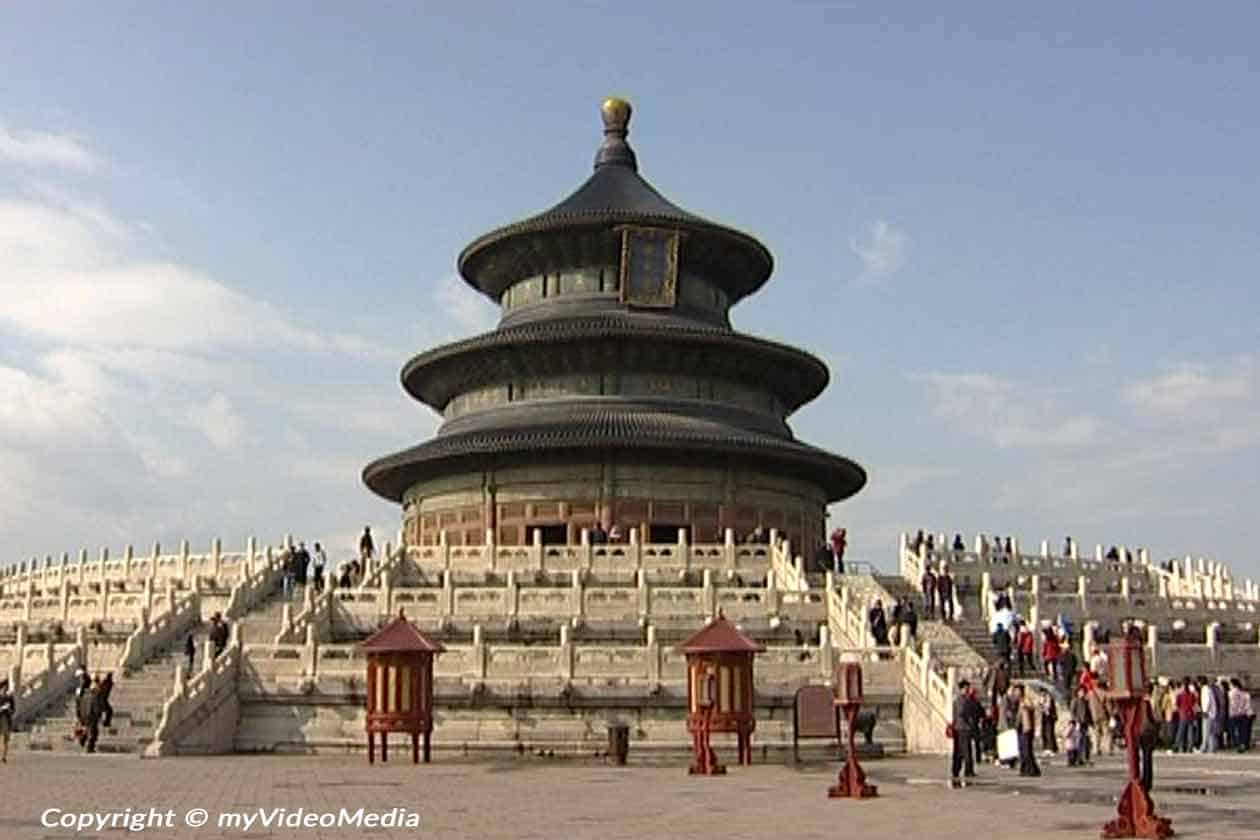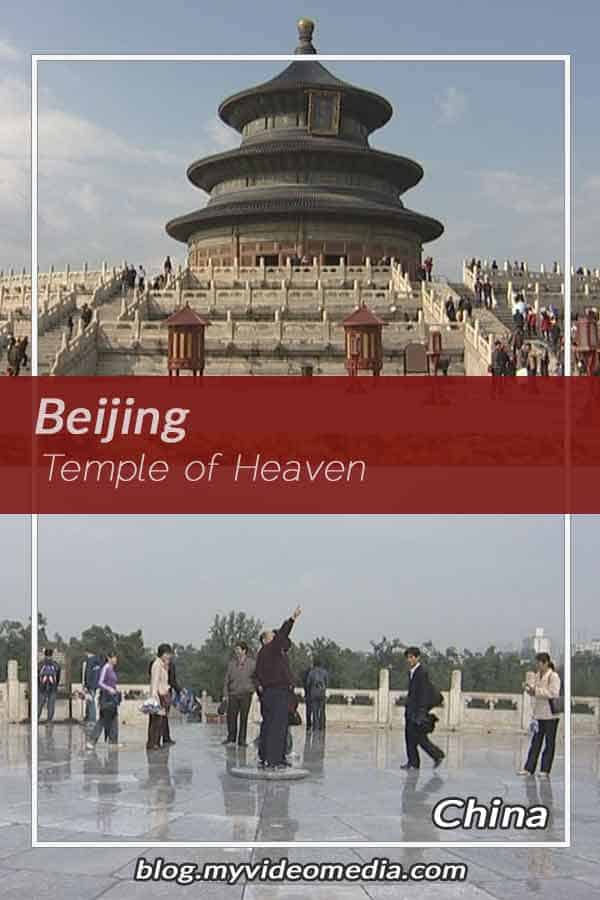Three cities in China symbolize the eras in China’s history: Beijing represents the present, Xian the past, and Shanghai the future.
Beijing, the capital of China, with 21 million inhabitants today (2004 – 7.5 million inhabitants), was also often the seat of the Chinese emperors in the past. In addition to modern administrative buildings and hotels, as well as architectural highlights such as the Olympic cities, the cultural heritage of the imperial era shapes the city, planned as a reflection of the cosmos.
We start our exploration tour southeast of the Forbidden City, at the Temple of Heaven. The complex of religious buildings is considered the holiest in China. Here, the emperors of the Ming and Qing Dynasties held Heaven Worship Ceremonies and prayed for a good harvest.

First, we visit the Circular Mound Altar, a circular platform on three decorated levels made of marble stones. In the middle is the slightly protruding round slate stone, the Heaven Heart Stone, also known as Sun Stone. Here, the emperor once gave an account to the heaven of his past year of reign and asked for blessings for his next. The stone was considered the center of square earth over which the sky was vaulted.
Please watch the video
You are currently viewing a placeholder content from YouTube. To access the actual content, click the button below. Please note that doing so will share data with third-party providers.
More InformationA few meters further on, we reach the Imperial Vault of Heaven, as this one-story round hall was named. It is home to the Ghost Boards of Heaven and the Ancestor Boards belonging to the ancestors of the emperor. This hall is surrounded by the Wall of Echos, which optimally reflects sounds thanks to its precise design.

Through the Gate of Harvest Victims, we come to the round inner courtyard, which is dominated by the Hall of Prayer for Good Harvests. This hall is captivating due to its perfect proportions with a diameter of 30 m and a height of 38 m. The roof is covered with 50.000 blue glazed tiles.
The center of the paths and steps are covered with white marble plates and reliefs upon which only the emperor could walk or be carried in sedan chairs.

In the interior of the Hall of Prayer for Good Harvests, you today will find a symbolical representation of the harvest sacrifices. More important, however, are the architectural symbols and their design. The entire hall is supported by 28 columns. The inner ring of columns symbolizes the four seasons, the middle ring of columns symbolizes the 12 months of a year, and the outer ring of columns symbolizes the 12 double hours of the day. Following Chinese tradition, one constructed the entire building from wood without the use of a single nail.
Together with the imperial palace, the Forbidden City, the entire grounds of the temple was constructed around 1420 and is today the largest temple in China. The outer wall has a length of 6416 m. The whole area, including a spacious and attractive park, covers an area of 293 hectares.

The covered paths along the sides of the temple property today serve as an area for older people to play music and sing. It thus represents a communication center right in the middle of the city.
Since November 1998, the Temple of Heaven belongs to the UNESCO World Heritage Sites.
